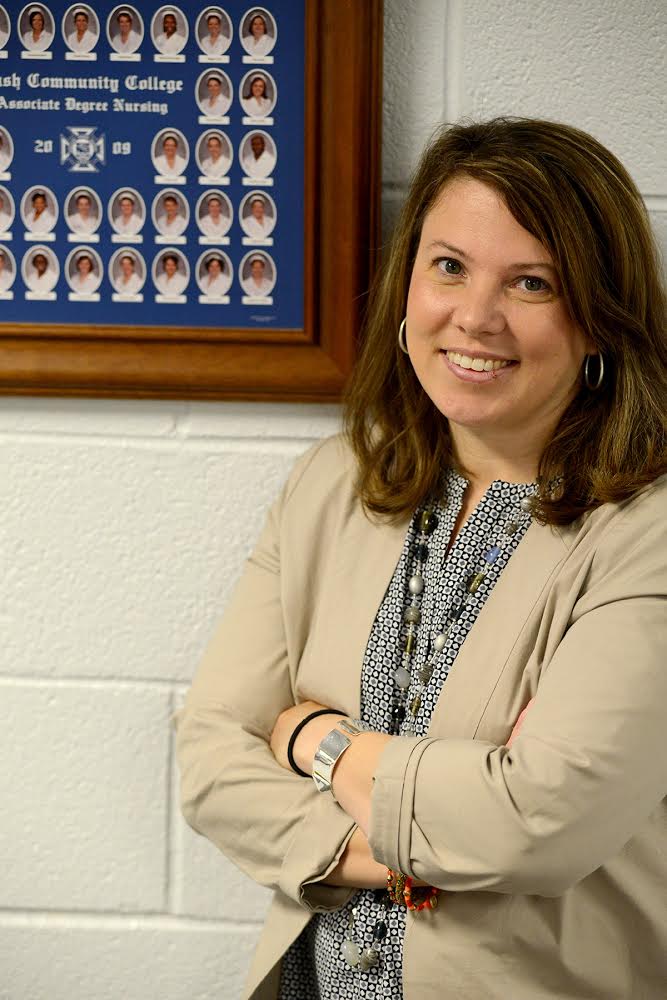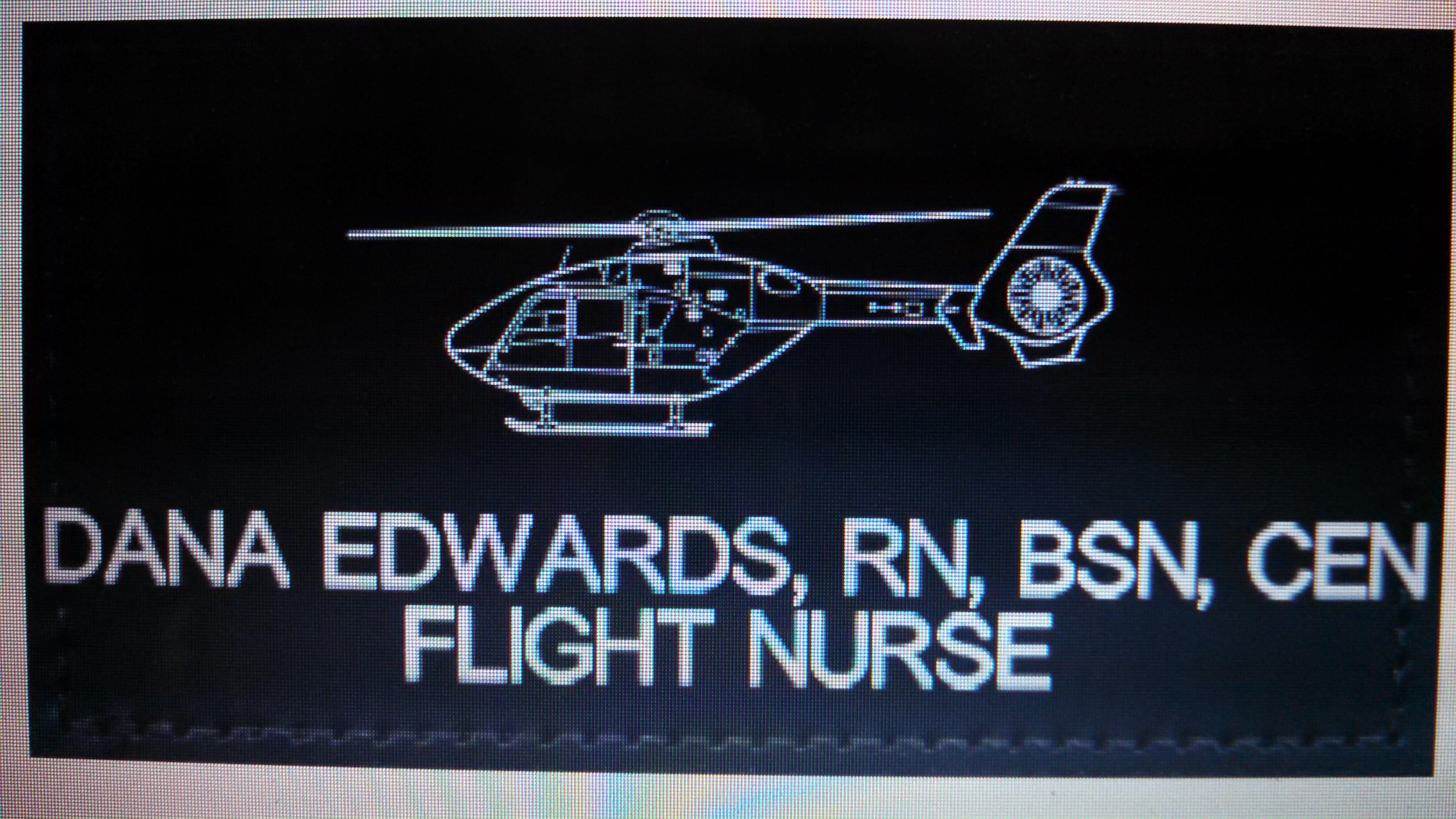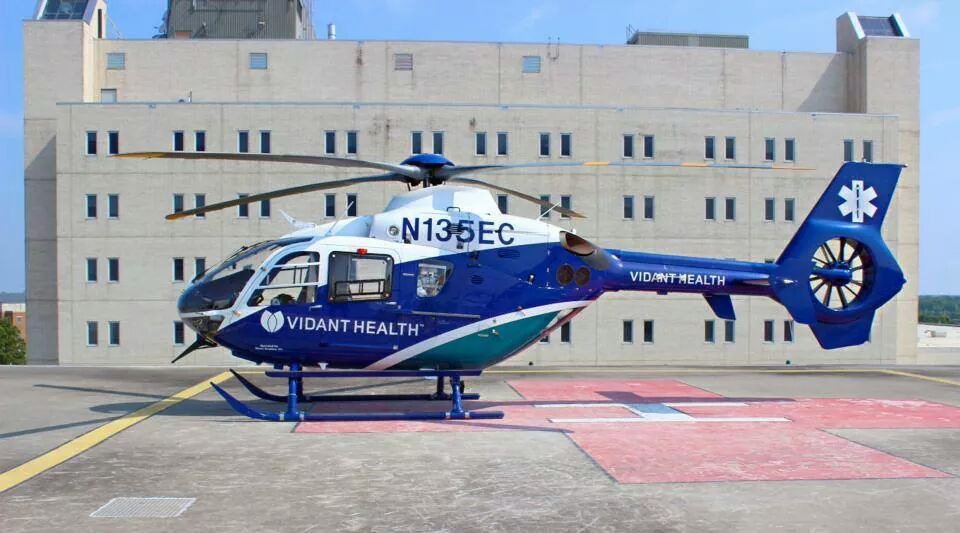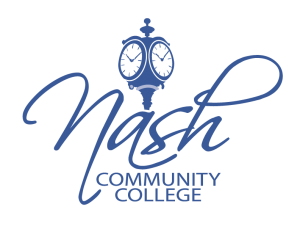
Alumni Association Spotlight: Dana Edwards
 In 2009, Dana Edwards’ hard work and dedication paid off when she graduated from Nash Community College’s Nursing Program. In the prior year, Dana obtained her certification as an Emergency Medical Technician from NCC. This is where her journey began.
In 2009, Dana Edwards’ hard work and dedication paid off when she graduated from Nash Community College’s Nursing Program. In the prior year, Dana obtained her certification as an Emergency Medical Technician from NCC. This is where her journey began.
Dana always knew she wanted to be a flight nurse and help change the outcome of people’s lives. She worked as a Unit Secretary in the Emergency Department at a local hospital while balancing a rigorous schedule as a nursing student. After completing her Associate Degree in Nursing, she was hired full time as Nurse in the Emergency Department. Dana used this opportunity to gain additional training, experiences, and skills she would need to be a flight nurse. She also completed her Bachelor of Science degree in Nursing at Winston-Salem State University.
 After three years in the Emergency Department, she applied to be a full time Flight Nurse with Vidant EastCare. Based out of Vidant Medical Center in Greenville, Vidant EastCare provides critical air and ground transport care services throughout eastern North Carolina. Vidant is the region’s only Level I Trauma Center and is also home to the James and Connie Maynard Children’s Hospital. Dana was offered the job with Vidant EastCare and her Emergency Department skills were put to the test. Today, two years later, she says she would not change a thing.
After three years in the Emergency Department, she applied to be a full time Flight Nurse with Vidant EastCare. Based out of Vidant Medical Center in Greenville, Vidant EastCare provides critical air and ground transport care services throughout eastern North Carolina. Vidant is the region’s only Level I Trauma Center and is also home to the James and Connie Maynard Children’s Hospital. Dana was offered the job with Vidant EastCare and her Emergency Department skills were put to the test. Today, two years later, she says she would not change a thing.
When asked why she loves her job, Dana replied, “I love the adrenaline, team work, and trauma situations affiliated with being a flight nurse. Each day I see individuals at their worst and provide medical attention and the compassion needed to support healing. At the end of each shift, I have the satisfaction of knowing my skills may have impacted the outcome of someone’s life. Another huge perk to the job is the beautiful views, and seeing a vast array of areas throughout Eastern North Carolina.”
 Dana’s days are challenging and unpredictable. The flight crew is made up of a pilot, a flight nurse, and either a second flight nurse or flight paramedic. The team works together to ensure the safety and comfort of each patient. In Dana’s job the main goal is to administer patient care effectively, and to provide comfort. She is responsible for initiating emergency care by making quick, measured and critical life-saving decisions until a patient’s care is transferred to a physician. This includes a wide array of capabilities such as intubation, drug management, and stabilizing blood flow.
Dana’s days are challenging and unpredictable. The flight crew is made up of a pilot, a flight nurse, and either a second flight nurse or flight paramedic. The team works together to ensure the safety and comfort of each patient. In Dana’s job the main goal is to administer patient care effectively, and to provide comfort. She is responsible for initiating emergency care by making quick, measured and critical life-saving decisions until a patient’s care is transferred to a physician. This includes a wide array of capabilities such as intubation, drug management, and stabilizing blood flow.
Dana treats patients with a vast range of ages and situations during each shift. Specifically Dana’s crew cares for patients ranging in age from infant to elderly. Some of the most common situations she must anticipate are car accidents, burns, heart attacks, strokes, sudden personal injury and other types of trauma.
 Dana said many people ask her if family members can accompany their loved ones during flight. “Sometimes a family member may provide support to patient care; however, safety is a priority. When this occurs, many factors are taken in consideration. As with everything else we do in flight, attention detail is very important. People are often surprised to learn that the weight of the crew and cargo on our flights is a top consideration. If a family member needs to accompany a patient, and the weight limitations do not restrict the relative in doing so, flight crews generally take the family member who weighs the least. The selected individual is weighed on a scale holding anything that will be transported with them. On these flights, every decision can have an impact.”
Dana said many people ask her if family members can accompany their loved ones during flight. “Sometimes a family member may provide support to patient care; however, safety is a priority. When this occurs, many factors are taken in consideration. As with everything else we do in flight, attention detail is very important. People are often surprised to learn that the weight of the crew and cargo on our flights is a top consideration. If a family member needs to accompany a patient, and the weight limitations do not restrict the relative in doing so, flight crews generally take the family member who weighs the least. The selected individual is weighed on a scale holding anything that will be transported with them. On these flights, every decision can have an impact.”
![544626_435012856572858_825763155_n[1]](https://www.nashcc.edu/news/wp-content/uploads/2014/11/544626_435012856572858_825763155_n1.jpg) Flight nurses are never sure of what to expect at the scene of an emergency; therefore, preparation is essential to effective care. Car accidents are common with the I-95/US-64 and 264 corridors in eastern North Carolina. “I take every moment I can to prepare and anticipate what’s ahead. We have to act fast, and think through each decision. If I have time, I might run through scenarios prior to arriving at an accident. For example: ‘What is the position of the accident victim in the car? How fast was the car travelling? Was the car accident a rollover, single car, or multiple car accident? Did any of the passengers die in the accident?’ All of these are key to understanding potential injuries, treating the patient effectively, and also relaying the information to physicians before our arrival,” she said.
Flight nurses are never sure of what to expect at the scene of an emergency; therefore, preparation is essential to effective care. Car accidents are common with the I-95/US-64 and 264 corridors in eastern North Carolina. “I take every moment I can to prepare and anticipate what’s ahead. We have to act fast, and think through each decision. If I have time, I might run through scenarios prior to arriving at an accident. For example: ‘What is the position of the accident victim in the car? How fast was the car travelling? Was the car accident a rollover, single car, or multiple car accident? Did any of the passengers die in the accident?’ All of these are key to understanding potential injuries, treating the patient effectively, and also relaying the information to physicians before our arrival,” she said.
 To ensure safety a checklist is completed at the beginning and end of each shift including: inspection of the interior of the helicopter and ambulance, inspecting medical equipment, and ensuring the aircraft or ambulance is fully stocked with medication, supplies, and other essential items needed to treat a patient. After checks are completed, briefings are held to discuss topics such as flight patterns, weather, and any potential flight restrictions. During times when weather prevents flight, a specially equipped ambulance is on ground to transport patients to Vidant. All of the services provided in the helicopter can also be provided in the ambulance.
To ensure safety a checklist is completed at the beginning and end of each shift including: inspection of the interior of the helicopter and ambulance, inspecting medical equipment, and ensuring the aircraft or ambulance is fully stocked with medication, supplies, and other essential items needed to treat a patient. After checks are completed, briefings are held to discuss topics such as flight patterns, weather, and any potential flight restrictions. During times when weather prevents flight, a specially equipped ambulance is on ground to transport patients to Vidant. All of the services provided in the helicopter can also be provided in the ambulance.
Although flight nurses aim to save lives, there are situations which are more difficult than others. In order to handle these, each crew is required to debrief after every call. This exercise provides an opportunity for crews to learn, share ideas and discuss feelings before caring for the next patient.
 Despite Dana’s wealth of field knowledge, she admits her experience began in the classroom as she recalls the demands of nursing school. She offers the following words of wisdom from for current nursing students: “Make sure you leave your mind open to all nursing opportunities. Go where your heart leads you. Take advantage of every clinical experience, and ask about additional learning opportunities if you have specific interests. Remember that clinicals are a great time to learn essential skills to communicate effectively with both providers and patients.”
Despite Dana’s wealth of field knowledge, she admits her experience began in the classroom as she recalls the demands of nursing school. She offers the following words of wisdom from for current nursing students: “Make sure you leave your mind open to all nursing opportunities. Go where your heart leads you. Take advantage of every clinical experience, and ask about additional learning opportunities if you have specific interests. Remember that clinicals are a great time to learn essential skills to communicate effectively with both providers and patients.”









